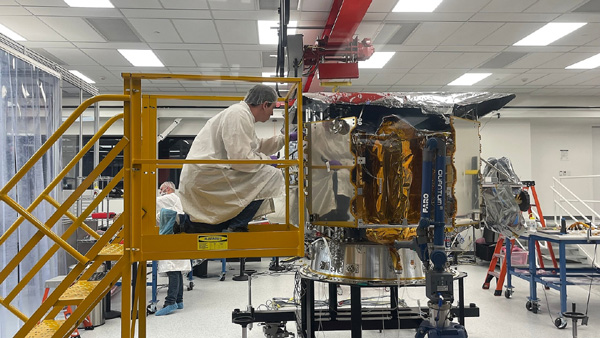
Dr. Andrew Horchler / Astrobotic
Landing Tech, Terrain Relative Navigation, Validated & Ready for Spaceflight (Press Release)
Pittsburgh, PA – Astrobotic announced today that its terrain relative navigation (TRN) landing suite for lunar landers, Optical Precision Autonomous Landing (OPAL), was fully validated during a week-long terrestrial flight test campaign above the mountains of the northern Mojave Desert in California. The OPAL hardware and flight software was subjected to similar conditions that it will experience during the Peregrine Mission 1 (PM1) lunar landing slated for early 2023.
During the more than 100km terrestrial flight path, the OPAL system repeatedly generated accurate, real-time location estimates by comparing captured images to onboard maps, created in advance from orbital imagery. The accuracy of these location estimates is vital for the TRN landing software to guide a spacecraft safely and precisely to a target landing site on the lunar surface where nothing like GPS is available.
“We are thrilled with the success of this challenging flight test. Our hardware and software captured hundreds of images, detected and matched features in our maps, and successfully produced valid location estimates in flight across the descent trajectories, just as it will at the Moon,” said Dr. Andrew Horchler, Chief Research Scientist at Astrobotic and principal investigator for OPAL.
Throughout this test, OPAL flew aboard a King Air B200 aircraft up to 9km in altitude. The pitch angle and trajectory mimicked Peregrine’s powered descent to the Moon, over a landscape that approximates lunar terrain. During the tests, an Astrobotic engineer rode along to monitor real-time telemetry from OPAL with additional engineers at the test site to analyze and troubleshoot data on the ground.
“This test bolstered our confidence in the accuracy of our OPAL technology. The data obtained in flight suggests that our algorithms have robust functionality even during off-nominal conditions. We see great potential not only in space applications, but also in civil and defense terrestrial GPS-denied applications,” said Horchler.
Lessons learned from this flight test are being implemented into the OPAL system to improve performance for operation during the Astrobotic PM1 mission. OPAL will then be used as part of the precision landing and hazard detection sensor suite for Astrobotic’s Griffin Mission One carrying NASA’s water-hunting VIPER rover to the Moon in late 2024.
Source: Astrobotic
****

Moonshot Museum

Moonshot Museum

No comments:
Post a Comment